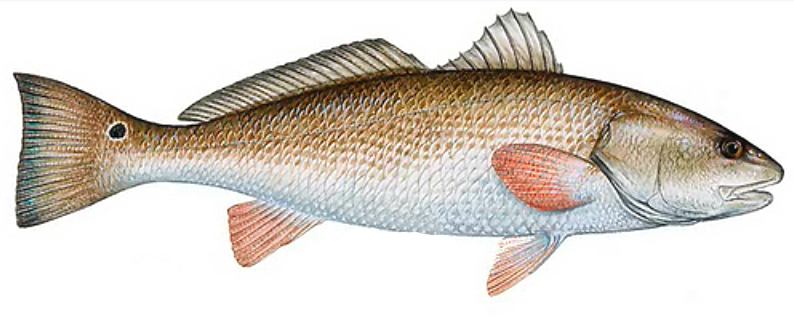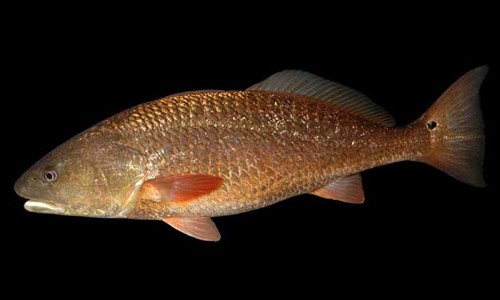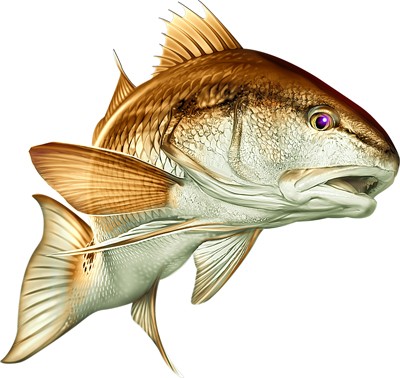
Sciaenops ocellatus
FAMILY
Sciaenidae
TAXONOMY
Sciaenops ocellatus (Linnaeus, 1766), Carolina, (United States).
OTHER COMMON NAMES
English: Redfish, channel bass; French: Tambour rouge; Spanish:
Corvinуn ocelado.
PHYSICAL CHARACTERISTICS
Body elongate with a somewhat large head, subterminal
mouth, two dorsal fins, and a truncate caudal fin. The anal
fin has two spines and the lateral line is continuous. Body
color is coppery-orange to light red; ventral surfaces are
white. The upper caudal peduncle has a prominent black
spot. Grows to about 61 in (155 cm) in total length, although
less so inshore compared to fishes living around barrier
islands.
DISTRIBUTION
Western Atlantic, from Massachusetts south to southern
Florida and west to northern Mexico in the Gulf of Mexico.
HABITAT
Inshore coastal waters and estuaries, over sand, mud, or oystershell
bottoms, among flooded marsh grasses, or in the surf
zone.
FEEDING ECOLOGY AND DIET
Forages along the bottom in search of crustaceans, mollusks,
and smaller fishes; will also form aggregations and attack
schools of baitfish in shallow water.
BEHAVIOR
Occurs singly or in aggregations. Communicates by using muscle
contractions to make a drumming noise that is amplified by
the swim bladder.
REPRODUCTIVE BIOLOGY
Forms spawning aggregations, mainly from August through
November. Males produce a drumming noise when courting
females. Eggs are scattered and the larvae are pelagic.
CONSERVATION STATUS
Not listed by the IUCN. Fisheries are heavily regulated in
most places, as this species was severely overfished in the Gulf
of Mexico during the 1980s.
SIGNIFICANCE TO HUMANS
Once important in commercial fisheries but less so by the beginning
of the twenty-first century. An important recreational
species that is collected also for large public aquaria. Raised in
aquaculture.
Other popular Animals
Photo Gallery of - Red drum





 Animalia Life
Animalia Life